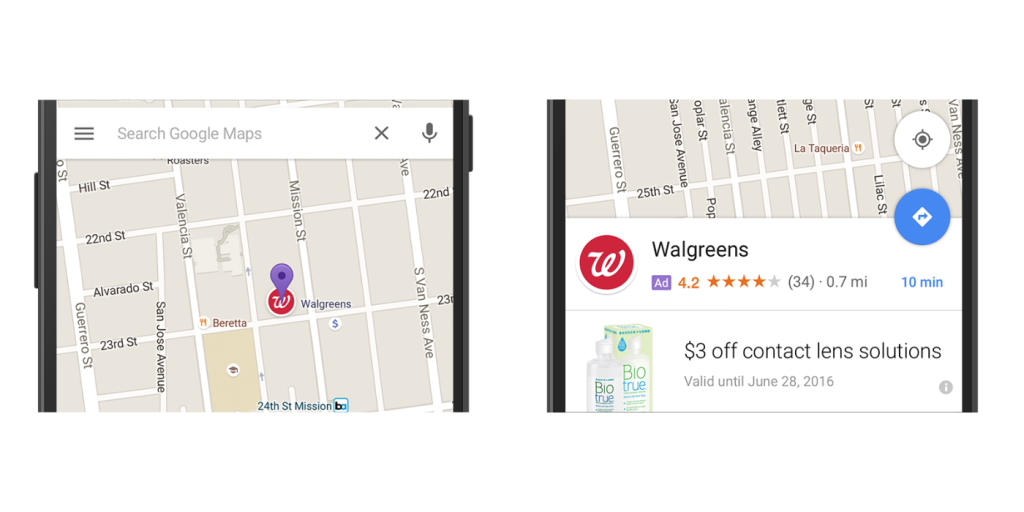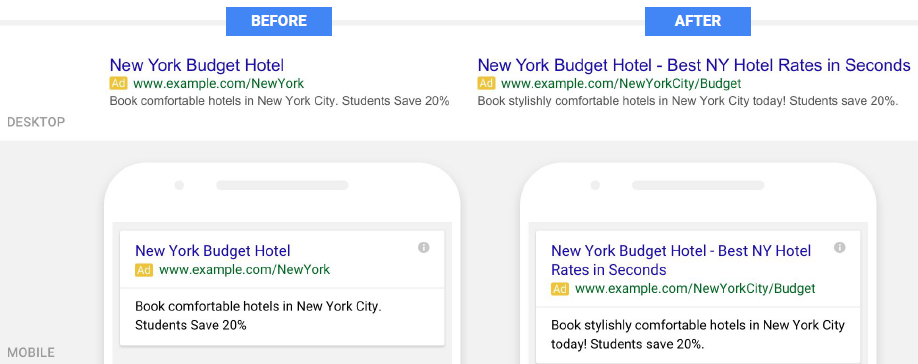“The shift to mobile is no longer a change on the horizon. It’s here.” – Google
Google experiences over a trillion searches every year and over half of those searches are being conducted on mobile. Google Analytics shows that more than half of website traffic is occurring on smartphones and tablets alone.
These findings show that marketers need to adjust the way they’re marketing. Google has stepped up to the challenge in the upcoming platform updates they announced during this week’s Google Performance Summit. They’ve “redesigned AdWords – from the ground up – and re-thought everything from creatives and bidding, to workflow and measurement.”
In today’s blog, we’re going to cover three of the updates you can expect to see in Google AdWords and why these changes needed to happen.
Map Changes
Location-related searches make up 30% of searches done on smartphones and are growing 50% faster than all other mobile searches. These findings resulted in Google testing out new updates on Google maps.
Promoted pins on Pinterest will now begin to show on maps to give a more visual brand image. The promotional pins will help brands build awareness and also be able to stand out better within a map of multiple pins. This will be smart for brands to jump on right away to be one of the first to have a branded pin within Maps.

There will also be new ad space available on Google maps in the form of local search ads. In these ads, brand logos and offers will appear directly on the surface of the map, rather than just alongside the map.
Why show ads in Google Maps?
Google Maps now has more than a billion users, and people visit 1.5 billion destination based site on their Google Searches. When someone looks at the map, they will see the company logo instead of text of the company name.
Expanding Text Ads
The increasing use of mobile has revolutionized the way brands can market their business. Earlier this year, Google updated the layout of the search results page by removing right-hand side ads on desktops, making the layout more consistent across devices. Now the platform has announced the biggest change to text ads since AdWords was launched fifteen years ago.
Google has announced the expansion to the format of text ads. Soon, advertisers will be able to have two 30-character headlines. This is a huge jump from the old format of one 25-character headline. They’re also getting rid of the two 30-character description lines and adding one 80-character description line. Below is an example.

Why change text ads?
After months of testing, Google found changing the ads to the new format drastically increased CTR, by as much as 25%. It gives the advertisers more text to play with and it helps bring better qualified traffic to businesses’ website and store fronts. These bigger ads will be serving on both mobile and desktop.
New Responsive Display Ads
Google also announced the release of responsive display ads. Soon you’ll only have to give Google a specific URL, headline, description, and an image, and Google will create responsive display ads for you. Google will take the information listed above and, depending on the website and inventory, create the best sized ad that is the most likely to produce a click.
Why responsive ads?
There are multiple spaces for display ads to run on – sites, apps, videos, as well as the difference of mobile and desktops. This endless amount of inventory means multiple different layouts for the same ad. Google’s new responsive ads for display will help decrease the production of ads on the marketer’s end.
Incorporating Google’s Updates
People’s online and offline worlds are colliding with smartphones which means it is more important than ever to build your business’s online brand with mobile in mind first. Google’s updates are meant to not only improve the customer experience for people looking for information, but also helping marketers show their ads to the right people at the right time.
If you’d like to know how you can incorporate these updates into your current marketing strategy, contact us today and schedule a time to talk to one of our marketing experts.